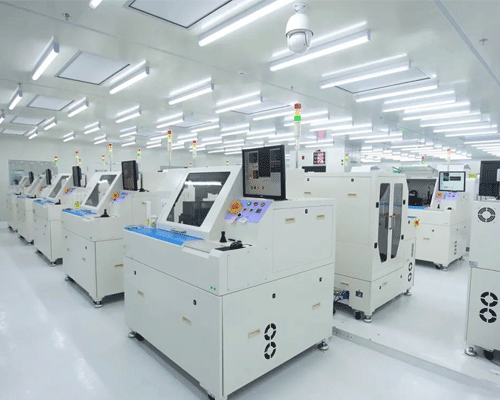China's semiconductor industry is developing rapidly, and the control of air cleanliness is increasingly strict. The semiconductor industry has extremely high requirements for air cleanliness, because both tiny particles and contaminants can have a significant impact on the performance of semiconductor devices. Today, this article will reveal the classification and application scenarios of air cleanliness in the semiconductor industry.
Air cleanliness
The clean workshop cleanliness standard of semiconductor materials is mainly divided into several grades, from high to low in order: 1, 10, 100, 1000, 10000. Among them, the 1 level cleanliness standard is the highest, the requirements are very strict, and the 10000 level cleanliness standard is relatively loose.
The hierarchy is defined in the following pattern:
Class X (at Y μm)
Where X is the grade of the clean room, such as 100 or 10000, etc., Y is the particle size such as 0.2μm, 0.5μm, etc., which can be checked. This means that the user specifies that the particle content of the clean room must meet the limits of the grade in these particle sizes.
class10000

It means that each cubic meter of air has no more than 10,000 dust particles with a diameter greater than or equal to 0.5μm, and no more than 70 dust particles with a diameter greater than or equal to 5μm.
The 10,000 dust-free workshop is used for the assembly of hydraulic equipment or pneumatic equipment, and is also commonly used in the medical industry.
class1000
It means that the number of dust particles with a diameter greater than or equal to 0.5μm in each cubic meter of air does not exceed 1000, and the number of dust particles with a diameter greater than or equal to 5μm does not exceed 7.
Compared with the 10,000 level of cleanliness, the thousand level of cleanliness is more stringent in the control of particles in the air. This type of cleanliness is typically applied to key production areas in semiconductor factories, such as wafer fabrication, package testing, and so on.
class100
It means that the number of dust particles with a diameter greater than or equal to 0.5μm per cubic meter of air does not exceed 100.
In addition, the requirements for microorganisms are also very strict, requiring the presence of no microorganisms at all. It can be used for aseptic manufacturing process in the pharmaceutical industry.
class10
It means that the number of dust particles with a diameter greater than or equal to 0.1μm in each cubic meter of air does not exceed 350, the dust particles with a diameter greater than or equal to 0.3μm does not exceed 30, and the dust particles with a diameter greater than or equal to 0.5μm does not exceed 10. This level of cleanliness is commonly used in ultra-clean production areas in semiconductor manufacturing processes, such as chip manufacturing, nanotechnology, etc.
class1
It means that the number of dust particles with a diameter greater than or equal to 0.5μm in each cubic meter of air does not exceed 1. The dust-free workshop is mainly used in the microelectronics industry to manufacture integrated circuits, and the precise requirements for integrated circuits are submicrons. At present, Level 1 clean rooms are very rare in the whole of China.



